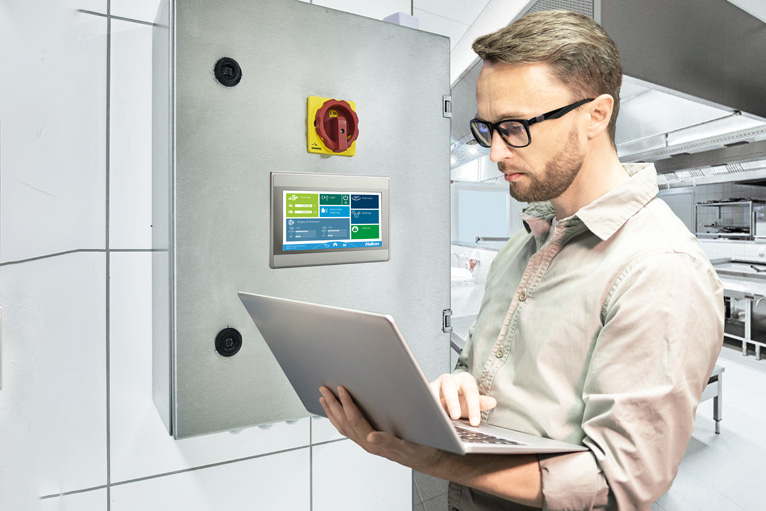The pace of technological advancements in commercial kitchens is increasing. They are driven by connectivity and IoT (Internet of Things) platforms collecting vast amounts of data. How can this data be analyzed and put to good use by the operator?
Operators can leverage data in commercial kitchens to optimize operations, improve efficiency, enhance customer experiences, and make informed business decisions. That is where AI or machine learning can be put to practical use.
Here are some methods through which operators can leverage data.
- Performance Monitoring: By collecting data on equipment usage, energy consumption, and operational parameters, operators can monitor the performance of kitchen appliances and systems. Analyzing this data can help identify inefficiencies, predict maintenance needs, and optimize equipment usage to reduce energy costs and increase lifespan. The operator can reduce the lifecycle cost by proactively anticipating how best to use and maintain equipment.
- Inventory Management: Data can be used to track and analyze inventory levels, ingredient usage, and expiration dates. By integrating inventory data with sales and customer preferences, operators can optimize stock levels, minimize waste, and ensure they have the right ingredients available at the right time. Food spoilage is a significant issue for many food service operations. Food shrinkage and inventory levels can be optimized by managing the shelf life and understanding customer demand.
- Menu Optimization: Data analysis can provide insights into customer preferences, popular dishes, and seasonal trends. Operators can use this information to refine menus, introduce new items, adjust portion sizes, and create personalized offerings that cater to specific dietary preferences or restrictions. Menu’s no longer have to be relatively static but can be adjusted as preferences and trends change.
- Customer Insights: Collecting data on customer behavior, ordering patterns, feedback, and demographics allows operators to understand their customer base better. This information can be used to create targeted marketing campaigns, loyalty programs, and personalized experiences that resonate with customers and drive repeat business.
- Operational Efficiency: Data analysis can help identify bottlenecks in kitchen workflows, optimize staffing levels, and streamline processes. By tracking metrics such as order fulfillment time, table turnover rates, and kitchen throughput, operators can identify areas for improvement, implement workflow adjustments, and enhance overall operational efficiency. Food service operations are much like any production facility. Identifying key metrics to measure allows for a better understanding of improving throughput.
- Energy Management: Monitoring energy consumption data allows operators to identify energy conservation and cost reduction opportunities. By analyzing energy usage patterns, operators can make informed decisions about equipment upgrades, implement energy-saving measures, and track the impact of sustainability initiatives. Kitchen exhaust and HVAC significantly impact energy usage in food service operations. Intelligent controls can automatically manage airflow levels and adjust during different day periods to match the cooking demand and reduce it during idle or off-peak periods.
- Food Safety and Compliance: Data can be used to ensure compliance with food safety regulations and quality standards. Monitoring critical control points, such as food storage temperatures, cooking times, and cleaning schedules, can help identify and address potential issues, minimizing the risk of foodborne illnesses and maintaining compliance.
- Predictive Analytics: Leveraging historical data, operators can employ predictive analytics to forecast demand, optimize staffing, and manage inventory. This helps operators anticipate fluctuations in customer demand, plan for seasonal variations, and make data-driven decisions to prevent overstocking or understocking situations.
To harness the power of data effectively, operators need to invest in data management systems, analytics tools, and staff training to ensure proper data collection, storage, analysis, and interpretation. It is essential to prioritize data privacy and security to protect sensitive customer and operational information.
Do you have questions? Leave us a message below or please send your questions by using the “Ask the Expert“
Our recommended next article would be: Technology in Commercial Kitchens, What Does the Future Hold?
Subscribe to kitchenventilation.com
Stay up to date by subscribing to Halton’s Commercial Kitchen Ventilation Blogs by entering your email address to subscribe and Halton will provide you with the latest information on commercial kitchen exhaust hoods, pollution control units, air handling, and safety systems. You will receive notifications of new posts by email.

